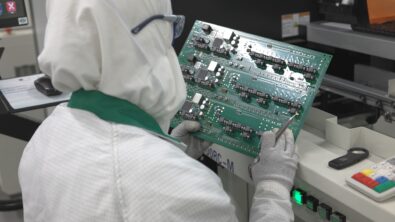Overcoming MedTech Challenge #4: Market Consolidation and Technology Partnerships

Fourth in a series of seven blogs focused on the top challenges that medtech manufacturers face today, and the technologies and implementation strategies that are critical to meeting these challenges.
Large medical device companies’ drive for scale and strength in their chosen core business areas compels them to pursue merger and acquisition (M&A) strategies as well as technology partnerships to achieve dominance. In an environment of accelerating consolidation and partnerships, how can MD&D manufacturers consolidate disparate systems and leverage technology to support improved communication and cooperation?
Here are a few key insights related to these trends:
- The industry has evolved over the last several decades from a fast-growing market to a maturing one, driven by a slowdown in production volume. As a result, the industry is experiencing accelerating consolidation
- Abbott Laboratories acquired St. Jude Medical for $25B. The acquisition is an important part of the company’s ongoing effort to develop a strong, diverse portfolio of devices, diagnostics and pharmaceuticals for cardiovascular diseases, Frost & Sullivan reports
- Johnson & Johnson (J&J) acquired Abbott’s eye surgery business for $4.33B. The deal allows Abbott to focus on its core business and divest from noncore business. It also allows J&J to expand its portfolio and become a larger presence in vision care
- Frost & Sullivan has found that almost half of CEOs (45.8 percent) believe they will rely on partnerships to drive their organization’s growth over the next three years
The strategic advantages of consolidation and partnerships cannot be gained without taking on some new challenges that affect a company’s digital technologies:
M&A leads to a multitude of disparate systems. As M&A activity brings together manufacturing environments from previously separate companies, disparate systems and point solutions will need to be consolidated to achieve visibility and control quality and cost.
M&A may lead to culture clashes and miscommunication. Bringing together organizations will require extensive communications not only to coordinate innovation, compliance and quality, but also to overcome cultural differences. Manufacturers will not only need to manage organizations, but also leverage technology to support a common digital footprint and foster communication and cooperation.
Companies must manage any increase in technology partnerships. The rise of high tech in MD&D is driving manufacturers to new competitive areas where they may not have all the capabilities and knowledge in house.Manufacturers will need to establish strategic partnerships with high tech manufacturers to augment their skills and enable them to deliver new devices to market.
To address these challenges, manufacturers will rely heavily on Manufacturing Execution Systems (MES) to unify disparate manufacturing operations for both newly acquired companies and technology partners. MES must include the following capabilities to meet the new demands:
- MES systems must be built for global manufacturing operations, collaboration, visibility, control and analytics across the global operations, partner ecosystem and supply network
- MES systems must be enterprise-ready, enabled to exercise control across global manufacturing footprints, with complete end-to-end traceability and 5M enforcement (manpower, machine, materials, methods and measures)
- MES systems must support data aggregation across cloud-based IoT applications for big data analytics – facilitating understanding of performance across dispersed operations
- MES systems must support multi-plant collaboration for efficient and scalable change management
To ensure their MES supports this type of global manufacturing environment, manufacturers must meet several platform requirements:
- Multi-site capabilities that are easy to use out-of-the-box (OOTB)
- Ability to customize the manufacturing process using OOTB data modeling capabilities
- Definition of standard operations, which will accelerate the ability to define a newly acquired company’s operations
- Ability to define centrally and customize locally – the MES should allow for local requirements and preferences
- Integration with scheduling solutions to identify plants with available capacity or equipment to create efficiencies
A global MES connects the enterprise, gets information flowing across multiple sites and partners in a rapid, consistent fashion to increase speed, agility and efficiency. The ability to lift-and-shift – allowing the propagation of manufacturing processes and instructions from one facility to another – creates rapid implementation at lower cost. Control over all global operations is imperative to produce consistent quality, ensure reliability and lower prices for end products, including complex devices.
As consolidation continues, MES is critical to increase innovation velocity and scale operations across disparate manufacturing operations.
Read the full white paper to learn about more trends facing the Medical Device industry, and how integrated MES is addressing new challenges.

